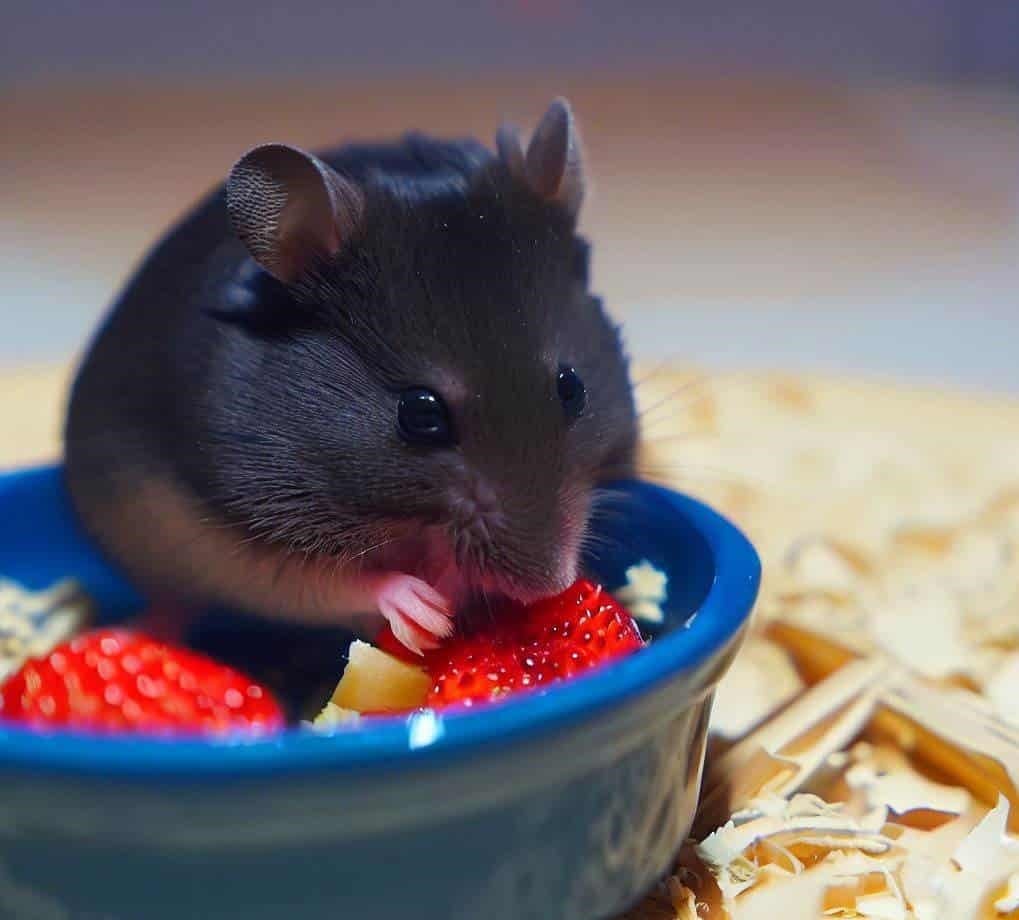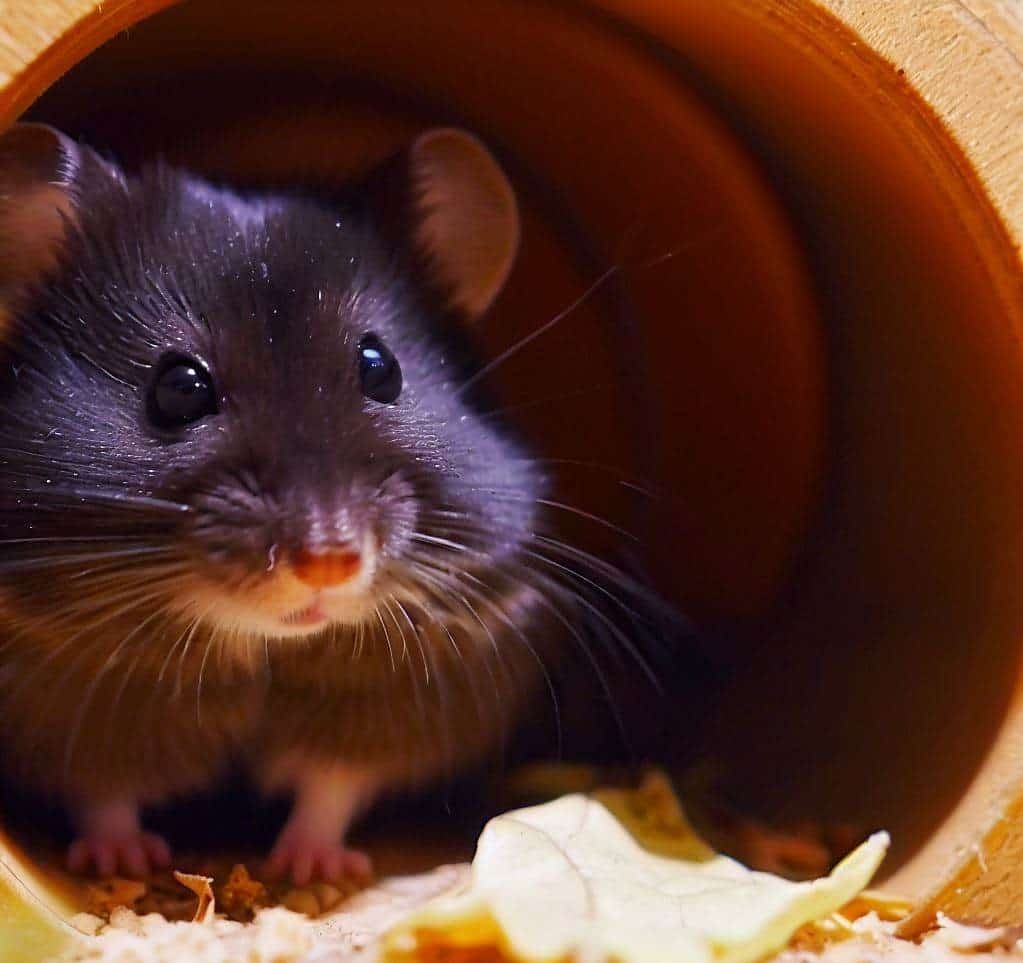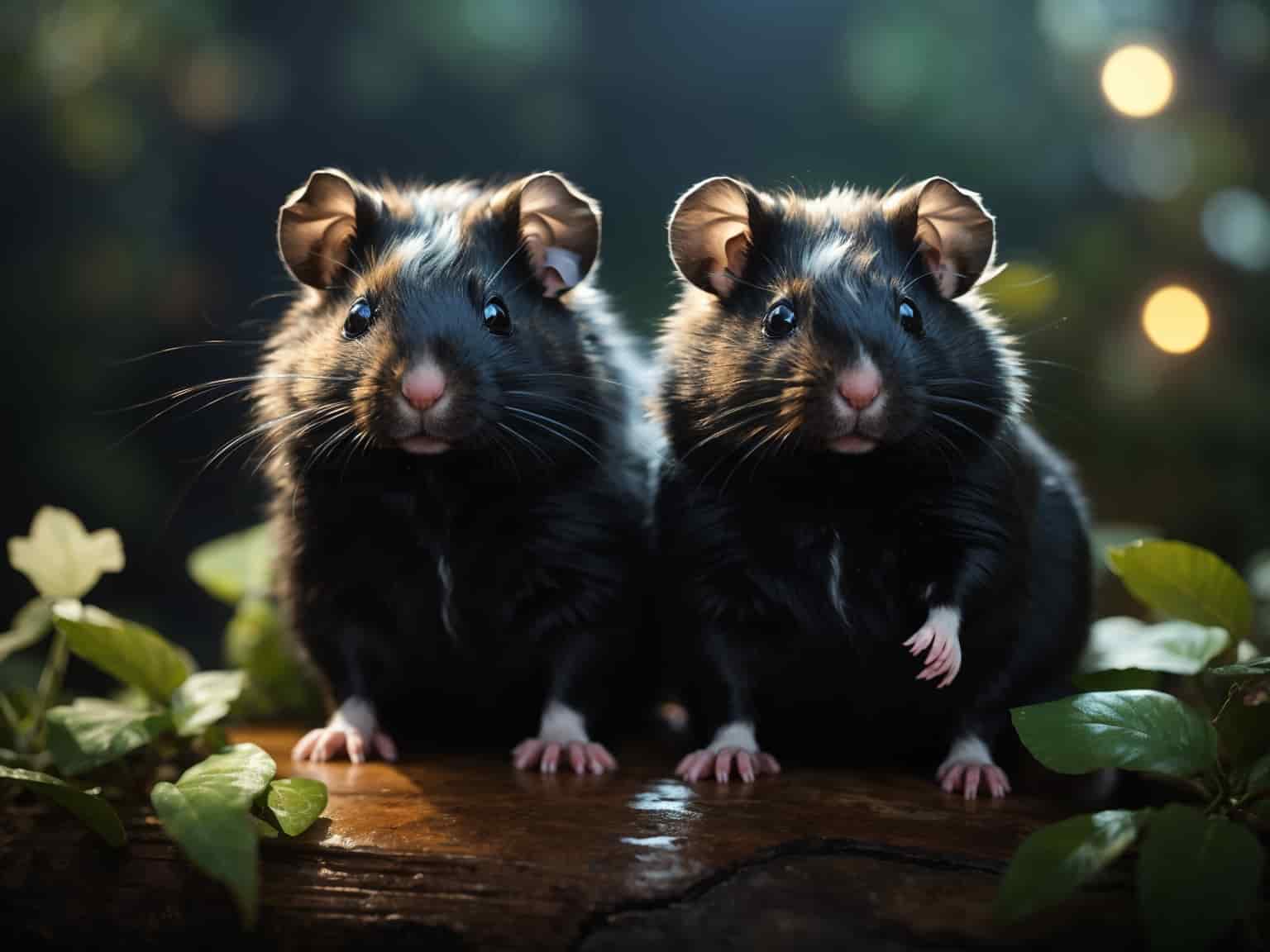Have you been charmed by the mysterious allure of black bear hamsters, those fluffy balls of midnight fur?
Well, then, you’re in the right place!
Drawing from years of experience as a hamster enthusiast and small pet expert, I’m here to guide you on their care and keeping.
These distinctive rodents, also known as black hamsters or black Syrian hamsters, make engaging pets for both beginners and seasoned keepers.
Stick around, and we’ll explore everything there is to know about these enchanting critters.
Table of Contents
Characteristics and Appearance of Black Bear Hamsters
Black bear hamsters are renowned for their lustrous ebony coats, contrasting with sparkling, curious eyes. These nocturnal wonders are a variant of the Syrian hamster, boasting a 5-7 inches body length when fully grown. But their beauty isn’t limited to their plush fur.
- Body: Sturdy and well-rounded, presenting a picture of health when well cared for.
- Fur: Dense, soft, and plush, creating a beautiful contrast against their pink ears and feet.
- Personality: Known for their docile, friendly nature and propensity for solitary living.
Even with their endearing traits, remember, every black bear hamster is an individual. They can exhibit a wide range of personalities, from active and explorative to calm and content.
Creating an Enchanting Habitat
Building an ideal habitat for your black bear hamster goes beyond choosing a cage and filling it with bedding. It’s about creating an environment that meets their natural instincts to burrow, explore, and play.
Choosing the Ideal Cage for Black Bear Hamsters
Opt for spacious cages, preferably 24x12x12 inches or larger. Wire cages, glass aquariums, or DIY bin cages can all work. Just ensure there’s ample ventilation to prevent respiratory issues.
Selecting Suitable Bedding Materials
Use unscented paper-based bedding or aspen shavings. These provide the depth necessary for burrowing. Avoid cedar or pine, as they can cause respiratory or allergic reactions.
Designing a Stimulating Environment
Create a stimulating environment with hideaways, tunnels, and platforms. Such features encourage natural behaviors and contribute to mental and physical well-being.
Nourishing the Beauty Within
Nutrition plays a significant role in maintaining your hamster’s glossy black coat and overall health. Let’s dive into their nutritional needs and an ideal diet.
Nutritional Needs of Black Bear Hamsters
Like all hamsters, black bear hamsters are omnivores, needing a balance of protein, fiber, and fats. A high-quality commercial hamster mix forms the cornerstone of their diet.
Recommended Diet and Feeding Guidelines
Feed your hamster 1-2 tablespoons of hamster mix per day, ideally in the evening when they’re most active. Supplement this with fresh fruits and veggies, serving a portion about the size of their head.
Incorporating Fresh Fruits, Vegetables, and Treats

Veggies can be offered daily, but fruits should be limited due to high sugar content. Treats should make up no more than 10% of their daily intake to avoid obesity.
Embracing the Glamour: Grooming and Coat Care
Your black bear hamster’s plush coat requires minimal grooming. Let’s see how you can help maintain their glossy fur and overall health.
Brushing and Maintaining the Luscious Coat
Black bear hamsters usually groom themselves, but brushing them with a soft toothbrush once a week can help remove loose fur and prevent matting.
Nail Trimming and Dental Care
Trim nails monthly, being careful not to cut into them quickly. Their teeth will naturally wear down from chewing hard foods and toys, but regular checks ensure they’re not overgrown.
Exercise and Enrichment
Black bear hamsters, though tiny, are bundles of energy that crave movement and stimulation.
Importance of Physical Activity and Mental Stimulation
Exercise and enrichment activities play a significant role in maintaining their health and happiness. Physical activities help ward off obesity, while mental stimulation ensures your hamster is alert and engaged, reducing the risk of boredom and associated destructive behavior.
Choosing Suitable Exercise Wheels and Toys

Opt for solid exercise wheels, as they protect your hamster’s feet from getting stuck. Include toys like tunnels, ladders, and chew toys, stimulating both their physical agility and mental curiosity. Remember, the toys should be safe and non-toxic.
Creating a Safe and Engaging Play Area
Devise a dedicated play area for your black bear hamster where it can freely explore and play. Use hamster playpens or a safe room with closed doors and no escape routes.
Integrate interactive elements like climbing structures and hiding places to mimic their natural habitat. Just ensure there are no sharp or small objects that could harm your hamster.
Unmasking Hidden Health Concerns
Knowledge of potential health issues in black bear hamsters is crucial in their care.
Common Health Issues in Black Bear Hamsters
Obesity and Weight Management
This concern is often due to overfeeding or insufficient exercise. Regular physical activity and a balanced diet are critical for maintaining a healthy weight.
Dental Problems
Issues like overgrown teeth and malocclusion can occur due to an inappropriate diet. Providing hard chewable toys and food can naturally grind down their teeth.
Respiratory Infections
Indicators of respiratory infections include wheezing, lethargy, and a runny nose. Ensuring clean living conditions can help prevent this issue.
Digestive Disorders
Digestive disorders such as diarrhea or constipation could be a sign of an unhealthy diet or stress. Always ensure your pet has access to fresh water and balanced nutrition.
Skin Conditions
Conditions, including mites or fungal infections, are common. Regular grooming and cage cleaning can assist in detecting and preventing such issues.
Eye Problems
Look out for issues like conjunctivitis or cataracts, often signaled by redness or cloudiness in the eyes.
Hair Loss or Bald Patches
Hair loss or bald patches could indicate parasites, allergies, or nutritional deficiencies.
Tumors and Growths
Tumors and growths can occur in older hamsters and require immediate veterinary attention.
Diabetes and Blood Sugar Imbalance
Diabetes and blood sugar imbalances are possible, so limit sugary treats.
Heat Stress or Overheating
Hamsters are prone to heat stress or overheating. Make sure their environment remains cool and well-ventilated.
Regular vet check-ups can aid in the early detection and treatment of these conditions.
Signs of Illness and Symptoms to Watch For
Knowing what signs to look for can help catch health issues early. Here are some symptoms to be alert for in your black bear hamster:
- Decreased Activity: If your normally active hamster becomes lethargic or unusually quiet.
- Changes in Appetite: Sudden increase or decrease in food consumption.
- Altered Stool: Loose, infrequent, or unusually colored stool can indicate digestive issues.
- Breathing Issues: Wheezing or rapid breathing could suggest respiratory problems.
- Physical Changes: Unexplained weight loss, hair loss, or presence of lumps.
Consult a vet promptly if any of these signs are observed.
Regular Check-ups and Preventive Care
An ounce of prevention is worth a pound of cure. Regular veterinary check-ups for your black bear hamster can help detect health issues early, increasing the likelihood of successful treatment.
Prevention methods, such as vaccinations and parasite control, are also essential in maintaining your pet’s overall health and well-being. After all, a healthy hamster is a happy hamster!
Techniques for Gentle Handling and Socialization
Gently and frequently handling your hamster will help foster trust. Keep initial sessions short and gradually increase the duration. Use both hands, allow them to walk from hand to hand, and never pick them up from above, as this can frighten them.
Expressing Their Beauty: Breeding Considerations
Breeding black bear hamsters should only be done responsibly and with comprehensive knowledge of the process.
Responsible Breeding Practices
Only breed if you’re confident about finding good homes for the offspring and are prepared for potential complications, like the mother rejecting the pups.
Pregnancy Care and Birthing Process
Pregnant hamsters require a diet high in protein and a safe, quiet space for birthing. Never disturb a hamster with newborns, as this can cause stress or aggression.
Caring for Newborn Hamsters (Pups)
Pups should not be touched until at least two weeks of age. Provide extra food and nesting material to the mother during this time.
Conclusion
Caring for black bear hamsters involves creating a suitable habitat, providing a balanced diet, ensuring regular exercise, and being vigilant about potential health issues. Remember, these adorable critters rely entirely on your care. So, let’s ensure they live their lives in joy, comfort, and good health.
And as you journey with these captivating creatures, remember the real beauty of black bear hamsters lies in their striking coats and the joy and companionship they offer.
FAQs
How long does a black bear hamster live?
On average, black bear hamsters live for about 2-3 years with proper care and a healthy lifestyle.
What should I feed my black bear hamster to ensure a balanced diet?
Your hamster’s diet should include a mix of hamster pellets, fresh fruits, vegetables, and occasional protein sources like boiled eggs or cooked chicken.
Is letting my black bear hamster free roam in my house safe?
While supervised play outside the cage is beneficial, ensuring the environment is safe, and hamster-proof is essential to prevent accidents or escape.
Alina Hartley is a small-town girl with a ginormous love of bearded dragons. It all started with Winchester, a baby bearded who was abandoned at the shelter by his former owners because of a birth defect that caused one front leg to be shorter than the other. Alina originally went to the shelter looking for a guinea pig, but one look at Winchester and it was love at first sight. From that day on, Alina has dedicated her life to learning everything she can about bearded dragons. She loves helping new beardie parents start their incredible journey with these magnificent reptiles.
Follow her on:
LINKEDIN
TWITTER.
Read her latest articles HERE
Learn more about her HERE.

